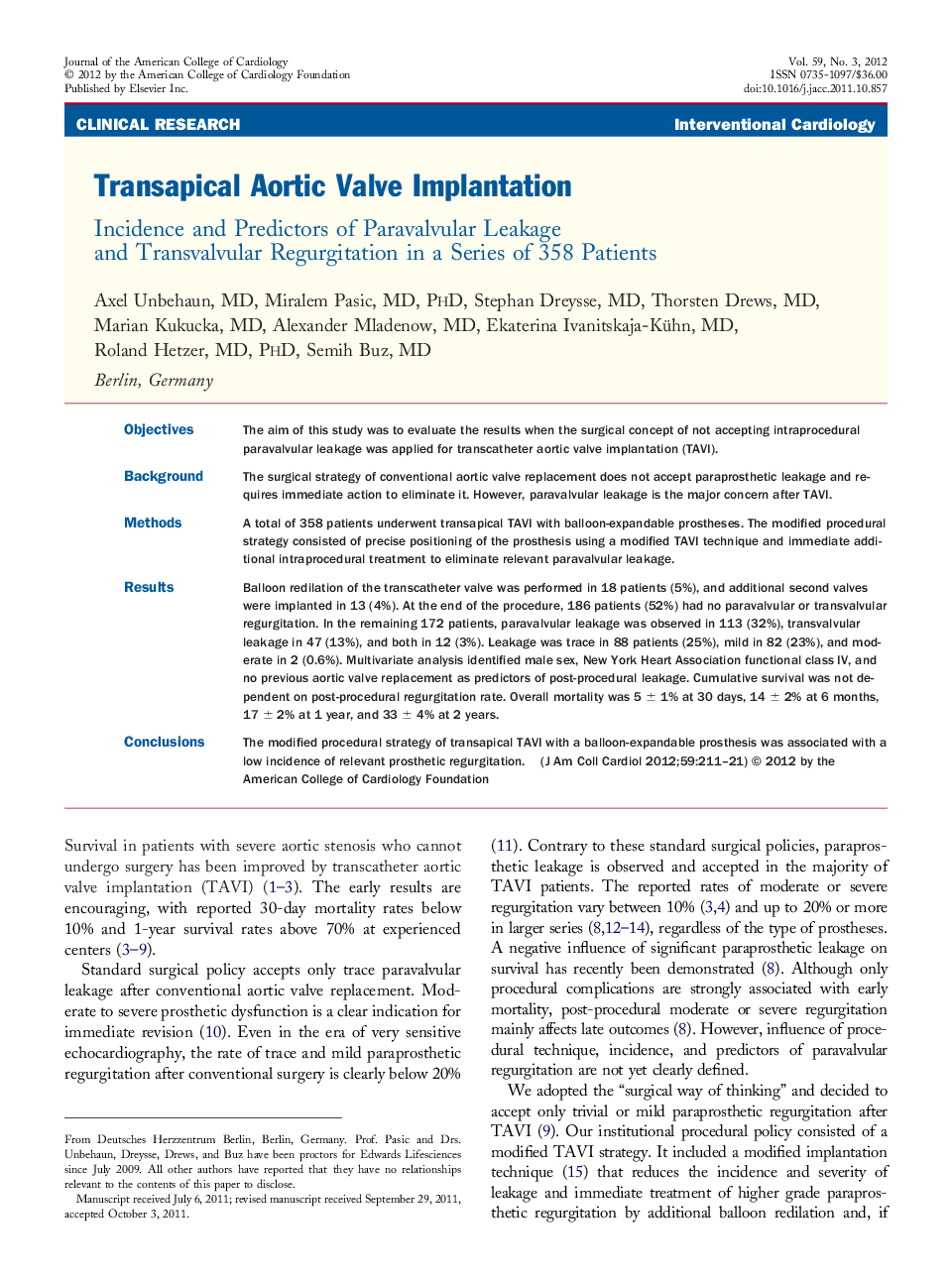| Article ID | Journal | Published Year | Pages | File Type |
|---|---|---|---|---|
| 2948093 | Journal of the American College of Cardiology | 2012 | 11 Pages |
ObjectivesThe aim of this study was to evaluate the results when the surgical concept of not accepting intraprocedural paravalvular leakage was applied for transcatheter aortic valve implantation (TAVI).BackgroundThe surgical strategy of conventional aortic valve replacement does not accept paraprosthetic leakage and requires immediate action to eliminate it. However, paravalvular leakage is the major concern after TAVI.MethodsA total of 358 patients underwent transapical TAVI with balloon-expandable prostheses. The modified procedural strategy consisted of precise positioning of the prosthesis using a modified TAVI technique and immediate additional intraprocedural treatment to eliminate relevant paravalvular leakage.ResultsBalloon redilation of the transcatheter valve was performed in 18 patients (5%), and additional second valves were implanted in 13 (4%). At the end of the procedure, 186 patients (52%) had no paravalvular or transvalvular regurgitation. In the remaining 172 patients, paravalvular leakage was observed in 113 (32%), transvalvular leakage in 47 (13%), and both in 12 (3%). Leakage was trace in 88 patients (25%), mild in 82 (23%), and moderate in 2 (0.6%). Multivariate analysis identified male sex, New York Heart Association functional class IV, and no previous aortic valve replacement as predictors of post-procedural leakage. Cumulative survival was not dependent on post-procedural regurgitation rate. Overall mortality was 5 ± 1% at 30 days, 14 ± 2% at 6 months, 17 ± 2% at 1 year, and 33 ± 4% at 2 years.ConclusionsThe modified procedural strategy of transapical TAVI with a balloon-expandable prosthesis was associated with a low incidence of relevant prosthetic regurgitation.
